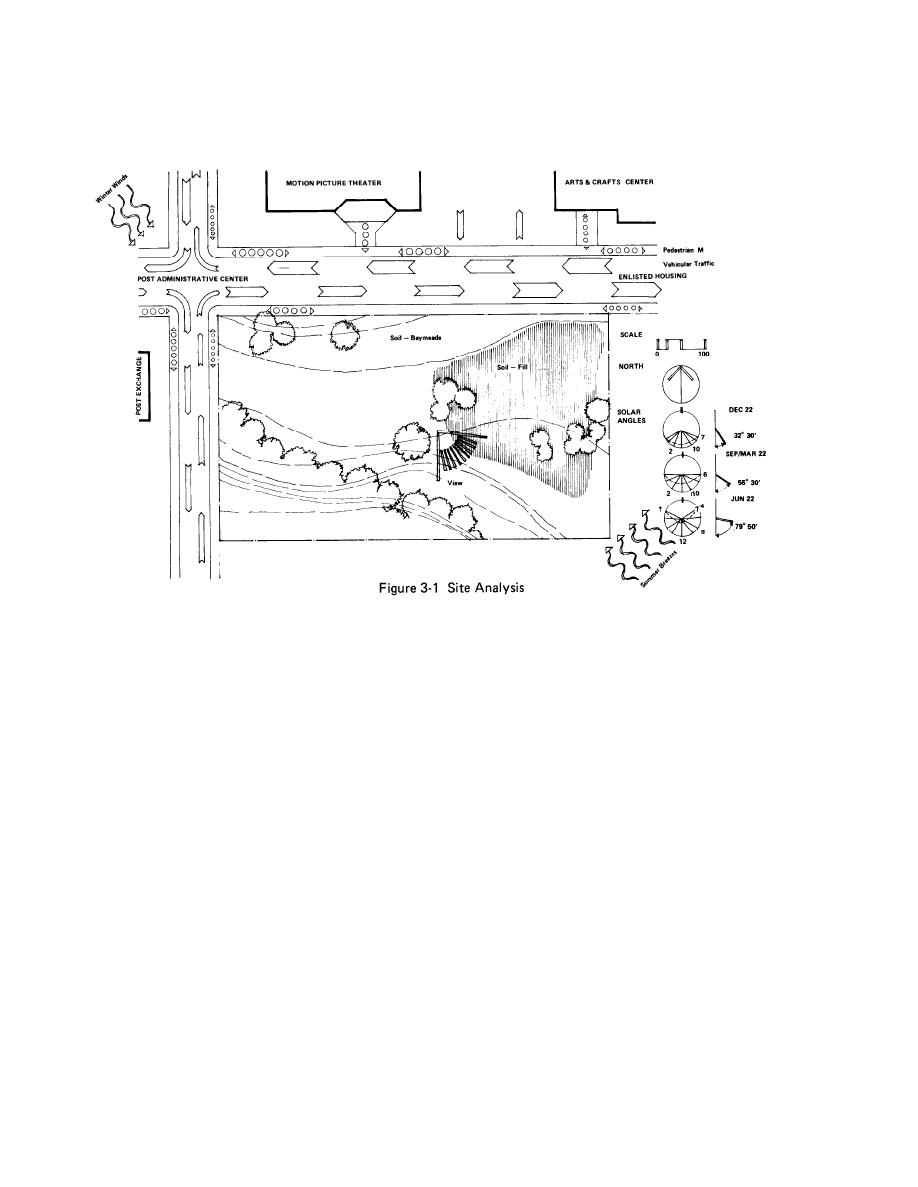
Design Guide: Recreation Centers Design Considerations January 1976
natural character of the site, and take into
(1) Energy Conservation. T h e p r i m a r y
consideration the natural drainage system.
consideration for building orientation on the
site must be the conservation of energy and
rocks,
outcropping of
(b) Trees,
increased comfort of both outdoor and indoor
ground forms, and water should be incor-
recreation areas. The effects of orientation on
porated into the site design. This preserves the
energy conservation are more fully explained in
natural beauty of the site and installation as
paragraph 3-5a.
well as enhances the design quality of the
Center.
(2) Surrounding Site Elements. The next
(c) On-site vehicular and pedestrian
consideration is to capitalize on attractive
movement must be considered as part of the
surroundings and views by orienting the
total circulation system of the installation. The
building toward them. Also, its physical
objectives of pedestrian movement are safety
relationships to other facilities and movement
(by reducing pedestrian-vehicular conflicts),
systems should enhance its effectiveness by
convenience of walking to the Center, continuity
drawing people toward it, making it part of a
with other paths, comfort and ease of walking,
unified community center.
and attractiveness. The objectives of vehicular
movement are safety of ingress and egress from
(a) Topography can determine suitabil-
the site, the prevention of congestion on
ity for building locations, parking areas,
installation roads, and ease of parking, service,
outdoor facilities, and paths. The design should
and fire protection.
require a minimum of grading, preserve the
3-2


 Previous Page
Previous Page
